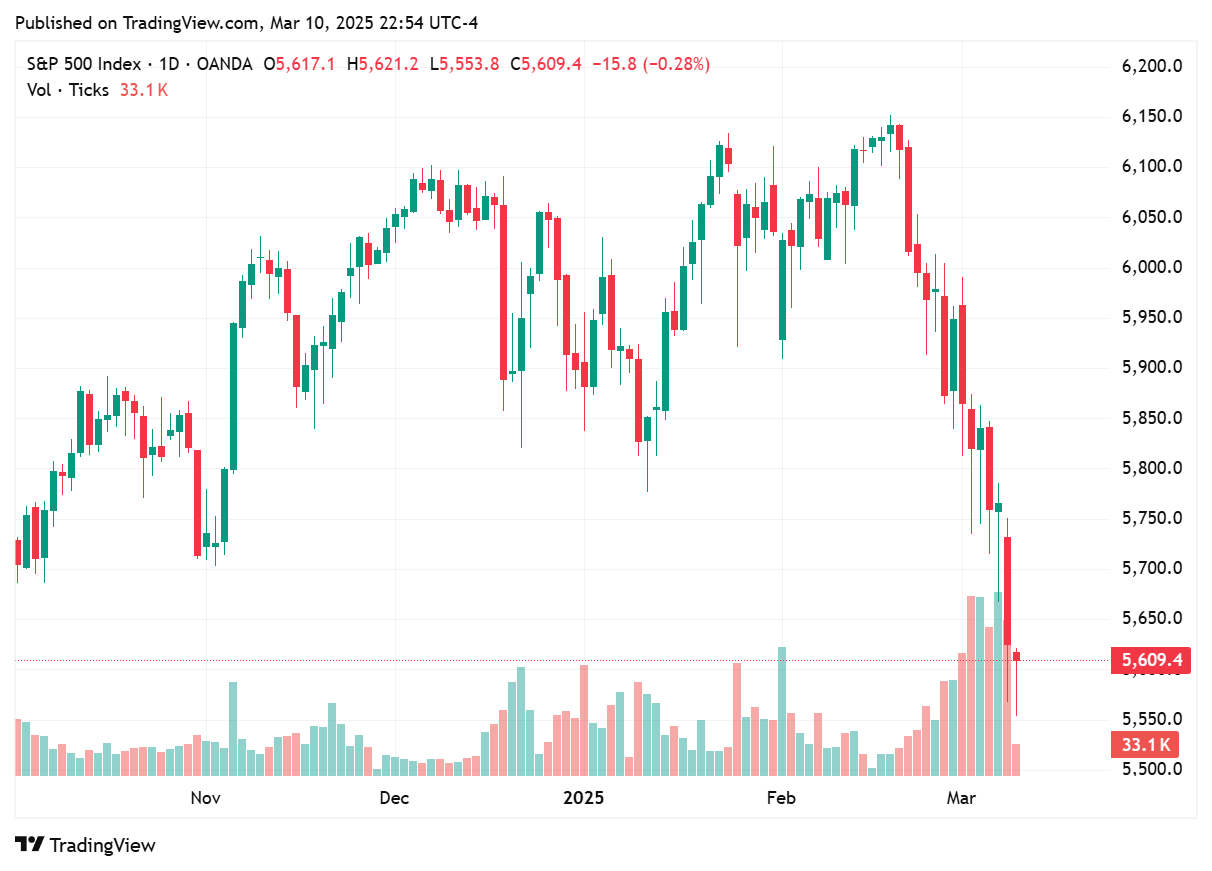U.S. stock market sell-off
The S&P 500 experienced a significant decline on March 10, 2025, due to several factors:
Economic uncertainty: President Trump's recent comments and policies have heightened fears of a potential recession. In a weekend interview, Trump declined to rule out the possibility of a recession in 2025, which unsettled investors. His comments added to fears of an economic slowdown, exacerbating market uncertainty.
Trade policy volatility: The Trump administration's inconsistent approach to tariffs, including rapid changes and last-minute exemptions, has created uncertainty for businesses and investors. This unpredictability has contributed to market instability.
.
Downgraded growth forecasts: The Atlanta Fed's GDPNow model has forecasted a contraction in U.S. GDP for the first quarter of 2025. Here are the key updates:
Initial Forecasts: The GDPNow model initially projected a 2.3% annualized growth rate for Q1 2025 in late January. However, subsequent economic data led to significant downward revisions.
Current Estimates:
As of February 28, the model predicted a contraction of 1.5% due to weaker-than-expected consumer spending and exports.
By March 4, the forecast worsened to a 2.8% contraction, influenced by poor personal consumption expenditures and declining manufacturing activity.
On March 6, the estimate slightly improved to a 2.4% contraction after incorporating additional data.
Contributing Factors:
A decline in personal consumption expenditures (PCE), which fell by 0.2% in January and adjusted for inflation dropped by 0.5%, significantly reduced GDP contributions.
Weak export performance and cautious business sentiment due to geopolitical and trade policy uncertainties also played a role.
Seasonal adjustments and volatility in early-quarter data may have amplified these shifts.
Goldman Sachs lowered its economic growth forecast for 2025 from 2.4% to 1.7%, citing stronger headwinds resulting from the administration's trade policies.



